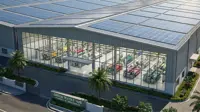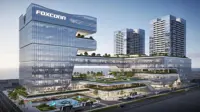Chapter: The Understated Radical
05 Dec 2015
At Axis House, the office space in its totality is unusually egalitarian. All directors on the senior executive floor have equal, pocket-sized cabins, just marginally larger than those of their junior colleagues elsewhere in the building. All employees, regardless of stature, sit on the same ergonomic Liberty Chair by American manufacturer Human scale. Priced at approximately Rs45,000, it is an expansive proposition by Indian standards to acquire for all staff members.
Such equality is rare in corporate hierarchies, especially in large organizations. For Sharma, it was a deliberate design principle. 'We wanted same sized cabins, with the same tables and chairs for everybody to demonstrate flatness and reduce the impact of hierarchy,' she says.
Second, it is unusually sensible. The space freed up by keeping cabins compact has been devoted to common areas. A variety of different 'work settings' have been created by intelligently modulating the generous scale of the 10,500-sq.ft senior executive wing, facilitating different sorts of conversations between co-workers-formal and informal, structured and spontaneous.
There are three 'lounge meeting rooms', where Sharma and her colleagues can hold informal interactions, such as our conversation. Formal discussions, which require presentations take place in 'structured' meeting rooms, as Sharma refers to them, or in the company boardroom.
For casual, spontaneous chats with colleagues or visitors, Sharma can choose one of the many clusters of chairs that are grouped, restaurant style, in the transaction spaces between cabins and meeting rooms. Thus, there are four different 'work settings' just on one floor, all of which are equally open to Sharma and her colleagues.
The workflow-oriented layout reflects a senior manager's average working day: Sharma says her day is spent between 'meetings, presentations and travelling, not in her cabin.' The most appropriate design solution: a space-efficient, shared suite of meeting rooms, tailored for diverse discussions. The layout also promotes collaboration, meeting Sharma's stated goal of making the bank 'more team-oriented'.
Six months into the new office, Sharma notes its positive effects. Executive committee meetings have become 'deeper, intense and more open', she says adding, and 'It is very interesting how a simple physical change can make such a huge difference.'
(See interview: A Journey into the CEOs' office spaces)






















